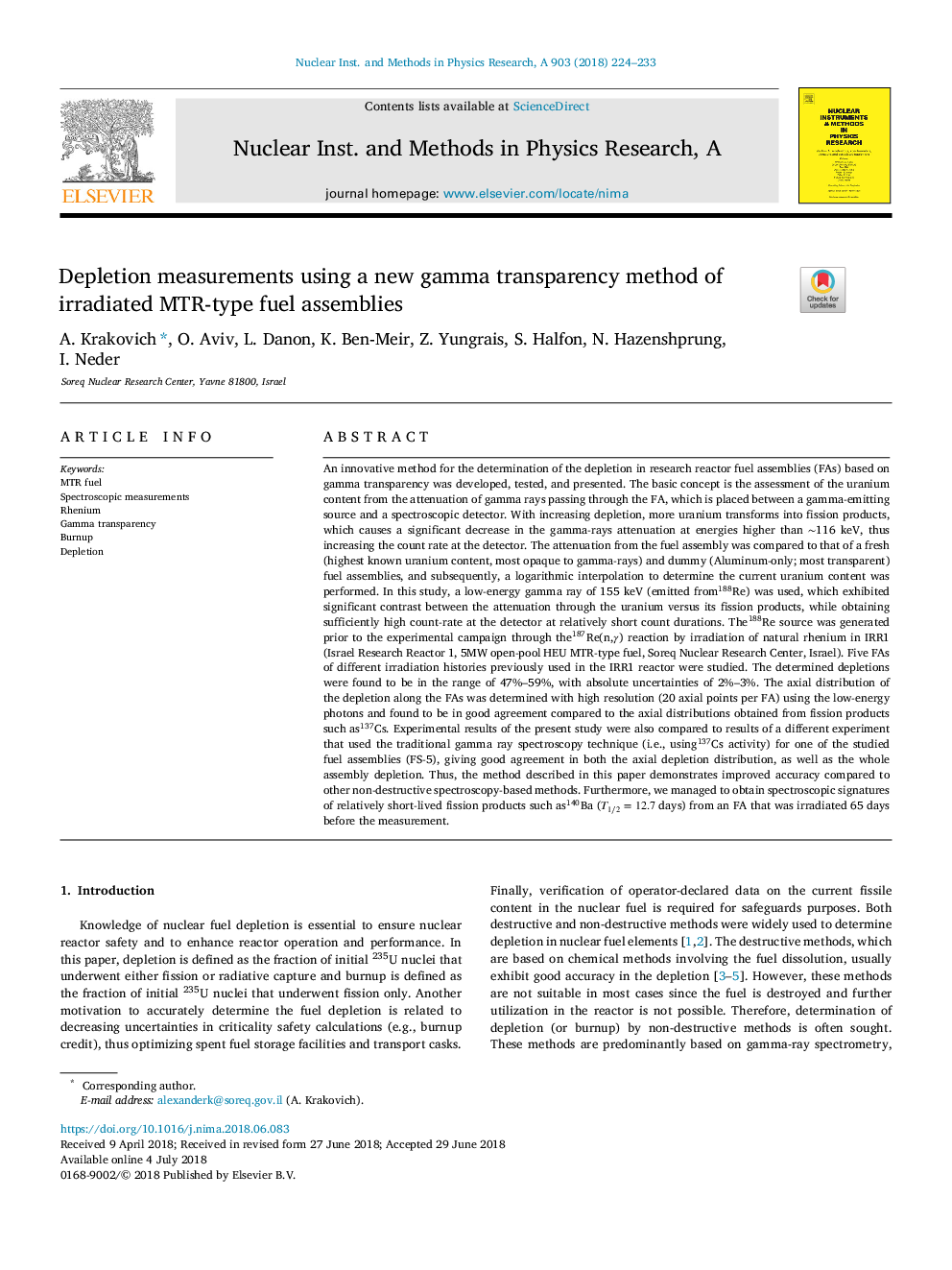| Article ID | Journal | Published Year | Pages | File Type |
|---|---|---|---|---|
| 8165966 | Nuclear Instruments and Methods in Physics Research Section A: Accelerators, Spectrometers, Detectors and Associated Equipment | 2018 | 10 Pages |
Abstract
An innovative method for the determination of the depletion in research reactor fuel assemblies (FAs) based on gamma transparency was developed, tested, and presented. The basic concept is the assessment of the uranium content from the attenuation of gamma rays passing through the FA, which is placed between a gamma-emitting source and a spectroscopic detector. With increasing depletion, more uranium transforms into fission products, which causes a significant decrease in the gamma-rays attenuation at energies higher than â¼116 keV, thus increasing the count rate at the detector. The attenuation from the fuel assembly was compared to that of a fresh (highest known uranium content, most opaque to gamma-rays) and dummy (Aluminum-only; most transparent) fuel assemblies, and subsequently, a logarithmic interpolation to determine the current uranium content was performed. In this study, a low-energy gamma ray of 155 keV (emitted from 188Re) was used, which exhibited significant contrast between the attenuation through the uranium versus its fission products, while obtaining sufficiently high count-rate at the detector at relatively short count durations. The 188Re source was generated prior to the experimental campaign through the 187Re(n,γ) reaction by irradiation of natural rhenium in IRR1 (Israel Research Reactor 1, 5MW open-pool HEU MTR-type fuel, Soreq Nuclear Research Center, Israel). Five FAs of different irradiation histories previously used in the IRR1 reactor were studied. The determined depletions were found to be in the range of 47%-59%, with absolute uncertainties of 2%-3%. The axial distribution of the depletion along the FAs was determined with high resolution (20 axial points per FA) using the low-energy photons and found to be in good agreement compared to the axial distributions obtained from fission products such as 137Cs. Experimental results of the present study were also compared to results of a different experiment that used the traditional gamma ray spectroscopy technique (i.e., using 137Cs activity) for one of the studied fuel assemblies (FS-5), giving good agreement in both the axial depletion distribution, as well as the whole assembly depletion. Thus, the method described in this paper demonstrates improved accuracy compared to other non-destructive spectroscopy-based methods. Furthermore, we managed to obtain spectroscopic signatures of relatively short-lived fission products such as 140Ba (T1â2=12.7 days) from an FA that was irradiated 65 days before the measurement.
Related Topics
Physical Sciences and Engineering
Physics and Astronomy
Instrumentation
Authors
A. Krakovich, O. Aviv, L. Danon, K. Ben-Meir, Z. Yungrais, S. Halfon, N. Hazenshprung, I. Neder,
